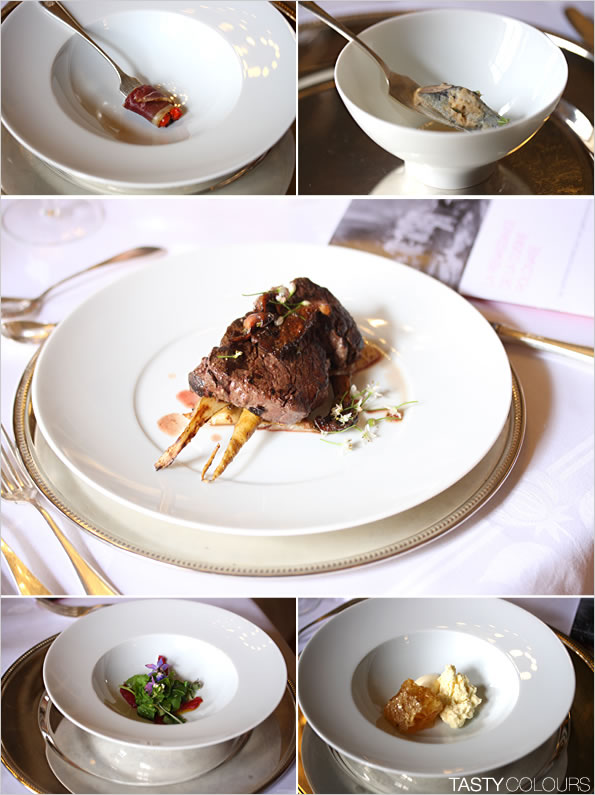A couple of
months ago the Polish Institute in Paris asked me to co-organize an event
promoting Polish cuisine. In September, "La Fête de la Gastronomie"
is an important culinary event organized in France which is supported by the
French Ministry of the Arts and Crafts, of the Trade and of Tourism (Ministère
de l'Artisanat, du Commerce et du Tourisme). Basically, La Fête de la
Gastronomie" is designated to the promotion of the French cuisine, but
this year national cuisines of other countries were welcomed to present their
culinary heritages. We did not have much time; the decision to participate in
the event was taken in June, right before the holiday season, while the whole
thing was planned for the month of September. We really had very little time!
As I
mentioned it many times in this blog, Polish cuisine experiences great times
(although you do not notice that so often in most restaurants). After years of
fall during the communism, we witness the birth of a new Polish culinary art.
Talented and non conformist chefs bravely use ancient traditions of the regions,
the richness of nature, the extraordinary history and the unique, traditional
techniques of food preparation as well as food products from the best local
producers. That is why the Polish Institute invited Aleksander Baron, a
talented chef of the young generation, to be in charge of setting up a menu, choosing
the products, which arrived straight from some of the best producers in Poland
and preparing the meals in Paris.
On Friday,
20th September, some selected guests were invited to the beautiful palace of
the Polish Embassy in Paris. The honorable patronage over lunch was performed
by Mrs. Urszula Orłowska, the wife of the Polish Ambassador in Paris.
This Friday
lunch started with a famous chilled soup (chłodnik)
made with Polish Red cattle broth and Polish noble crayfish. Then Białowieża
Woodland bison - tenderloin was served with milk cap
mushrooms and wild carrots as well as with Jerusalem artichokes baked in
phacelia honey and wild Polish thyme. Between the courses the chef served
"amuse-bouches", such as for example Vistula trout, pickled river
lamprey and smoked goose breast. Dessert was simple but unique, as the chef had
elected honeydew honey honeycomb, Polish sour cream and farmers' tvarog from
Smykań, all of them brought over from Poland of course. Unfortunately, the
artisanal butter which was part of the shipment did not survive the
transportation by plane. Thus, the chef was not able to serve what he had
anticipated: ice cream from butter from Smykań, Vistula sour cherry in single
distilled young potato vodka (Młody
Ziemniak 2012). The lunch was accompanied by an assortment of the best,
local Polish liqueurs (nalewki) and
vodkas, all chosen by the chef.
To make a
step into in the culinary future, one has to know the past. That is why the
second event, which took place on Saturday evening in one small Parisian restaurant
(specializing in Hungarian food) called Beashka, was dedicated to Polish
influences in the 19th century French cuisine. The dinner was animated by the
renowned food and culture historian professor Jaroslaw Dumanowski, while chef Baron
adapted ancient recipes to our more modern culinary language. Our guests could
taste revised versions of meals based on ancient recipes from old French cook
books like, for example, Vincent La Chapelle "Le cuisinier moderne" (The
Hague, 1742) and Urbain Dubois "La cuisine classique" (Paris, 1856). Hardly
anybody knows that a couple of hundred years ago, Polish cookery had been
appreciated and described by old masters of French cuisine, who had been using
Polish inspirations in their cooking.
The dinner
started with Polish noble crayfish cooked with dill weed and lemon butter roux.
The guests then were served two risky dishes: beets and carps. An excellent
Polish borscht was prepared with pickled beetroots and smoked goose breast (półgęsek). Boneless carp from the Land
of 1,000 lakes (Mazury) was served with an old fashioned grey sauce with
gingerbread (from the pastry shop of Franciszek Pokojski in Toruń) and a
parsley mousse. For desert, the chef served a selection of four ancient Polish species
of apples (antonówka, grochówka,
szczecinka, boskop) which were simply baked. Of course, everything was accompanied
by Polish liqueurs (nalewki) and vodka, chosen by the chef.
Here's is
the link to the booklet we prepared for the event.
The whole
event was recorded by the National Digital Library of Poland and digitalized.
Let's hope
that the Polish Institute will repeat the project in the future.












1 comment:
solusi tepat untuk mengatasi berbagai jenis penyakit secara alami tanpa efek samping
Obat Herbal Lambung Bengkak Obat Herbal Batu Empedu Kronis Tanpa Operasi Obat Herbal Polip Hidung Ampuh Obat Herbal Anemia Akut Obat Herbal Tumor Jinak Ampuh Obat Herbal Cacar Air Paling Ampuh Obat Herbal Varikokel Tanpa Operasi Obat Herbal Kanker Usus Besar Obat Herbal TBC Kronis Obat Herbal Keloid Ampuh
Post a Comment